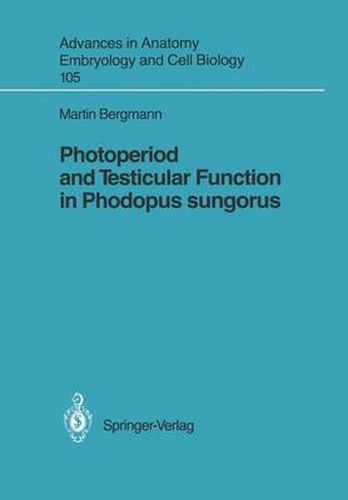Readings Newsletter
Become a Readings Member to make your shopping experience even easier.
Sign in or sign up for free!
You’re not far away from qualifying for FREE standard shipping within Australia
You’ve qualified for FREE standard shipping within Australia
The cart is loading…






This title is printed to order. This book may have been self-published. If so, we cannot guarantee the quality of the content. In the main most books will have gone through the editing process however some may not. We therefore suggest that you be aware of this before ordering this book. If in doubt check either the author or publisher’s details as we are unable to accept any returns unless they are faulty. Please contact us if you have any questions.
Many mammalian species living at medium or higher latitudes show marked annual cycles in various morphological and functional properties. There is a clear cycle of the reproductive activity ranging from a fertile to an infertile state in both the male and female. Such an annual periodicity can be regarded as an adaptation to seasonal changes of environmental conditions such as cli mate and nutrition, ensuring that birth and development of the litter are re stricted to a favorable season. These annual cycles consist of cyclic changes of exocrine and endocrine gonadal function, in the hormone-dependent organs (accessory glands, etc.) and in the hormonal hypothalamic-pituitary-gonadal system (for literature, see Hoffmann 1981). Such a seasonal cycle of reproductive activity was found in species from all vertebrate groups (i.e., birds, see Hoffmann 1981; Breucker 1982; reptiles, amphibians, and teleosts, see Hoffmann 1981). In those primate species of the Macaca family which are seasonal breeders (Zamboni et al. 1974), it was demonstrated by Richter et al. (1978) and Wickings and Nieschlag (1980) that these cycles are also evident under constant laboratory conditions, suggest ing that these cycles are based upon endogenous rhythms which are modulated and synchronized in the natural habitat by exogenous factors.
$9.00 standard shipping within Australia
FREE standard shipping within Australia for orders over $100.00
Express & International shipping calculated at checkout
This title is printed to order. This book may have been self-published. If so, we cannot guarantee the quality of the content. In the main most books will have gone through the editing process however some may not. We therefore suggest that you be aware of this before ordering this book. If in doubt check either the author or publisher’s details as we are unable to accept any returns unless they are faulty. Please contact us if you have any questions.
Many mammalian species living at medium or higher latitudes show marked annual cycles in various morphological and functional properties. There is a clear cycle of the reproductive activity ranging from a fertile to an infertile state in both the male and female. Such an annual periodicity can be regarded as an adaptation to seasonal changes of environmental conditions such as cli mate and nutrition, ensuring that birth and development of the litter are re stricted to a favorable season. These annual cycles consist of cyclic changes of exocrine and endocrine gonadal function, in the hormone-dependent organs (accessory glands, etc.) and in the hormonal hypothalamic-pituitary-gonadal system (for literature, see Hoffmann 1981). Such a seasonal cycle of reproductive activity was found in species from all vertebrate groups (i.e., birds, see Hoffmann 1981; Breucker 1982; reptiles, amphibians, and teleosts, see Hoffmann 1981). In those primate species of the Macaca family which are seasonal breeders (Zamboni et al. 1974), it was demonstrated by Richter et al. (1978) and Wickings and Nieschlag (1980) that these cycles are also evident under constant laboratory conditions, suggest ing that these cycles are based upon endogenous rhythms which are modulated and synchronized in the natural habitat by exogenous factors.